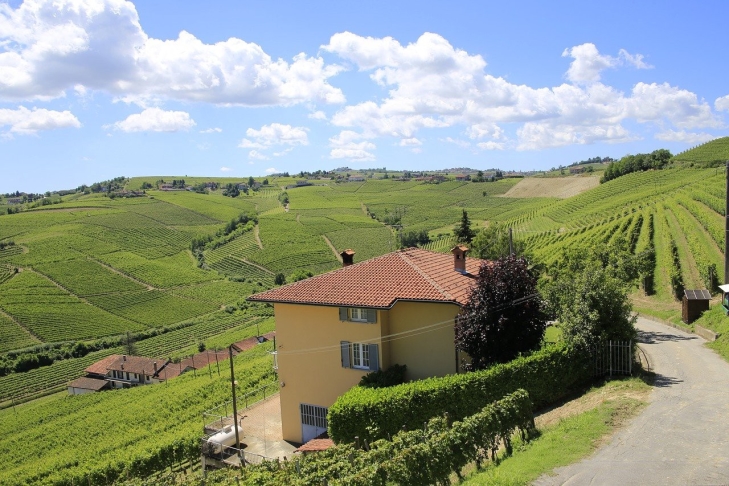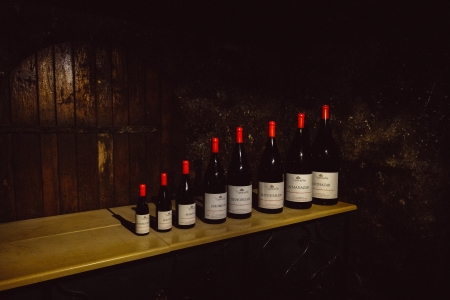The Culture That Makes Italian Wine
Wine has been cultivated in Italy for over 4,000 years and is synonymous with Italian culture. However, from a non-native perspective, it can be difficult to fully appreciate wine's impact on life in Italy until you completely immerse yourself in that life, by touching the soil, picking the grapes, and sharing the wine with locals, alongside local cuisine. Wine is a national symbol of the rich history, distinctive regional culture, family values, and connectivity shared by Italians.
My husband is 100% Sicilian, and I am 25% Abruzzese. Having the opportunity to travel to Italy as a family, and partake in these first-hand experiences has been extremely important to us. Food and wine offer the ability to immerse ourselves in our own cultural identity, no matter how generationally distant.
The Italian culture centers around food and wine, and there is tremendous local pride in sharing the cuisine and wine with visitors. It's an embrace that is so heartfelt and alluring it completely captivates you. Having traveled to many wine regions in Italy, I realized that complementary food and wine are customary, and wine is rarely found unaccompanied by a local snack. Take the ancient "aperitivo hour" for example, this sunset tradition offers to whet your appetite with antipasto (light bites) paired perfectly with native wines to prepare your stomach for the amazing meal ahead. Our travels have allowed us to experience the sub-cultures in various regions around Italy, each with its differing traditions and wine styles.
Traveling to Abruzzo, we took away stronger family values and age-worthy red wines like Montepulciano d'Abruzzo, and whites like Trebbiano, and Pecorino. In Puglia, we discovered the beauty and camaraderie of enjoying an aperitivo hour with gorgeous rosatos made from Negroamaro and Primitivo. From Sicilia, we recognized the unique regional dialect and the profound effect history and politics have had on their culture, as well as the vibrancy of their people and wines! Through these adventures, we had the privilege of experiencing each unique culture and have tried our best to bring back bite-sized pieces of these traditions into our home to add more light, love, and heritage into our lives.
All romanticizing aside, Italian wine hasn't always been perceived for its quality, and while Italy is the #1 wine-producing region in the world by volume, this doesn't necessarily mean it has been received well in the west. Not all wines are created equal and, indeed, the new world's overall perception of Italian wine was once generalized due to some less authentic wines, like the 1980s Lambrusco, bulk supermarket Chianti, and commercial Pinot Grigio. But if you look for a wine in its original home, where grapes are planted on the best sites with low yields, you can see where the magic of Italian wine lives and where high-quality wines are produced. Piemonte in particular is considered a conservative and traditional wine region where viticulture flourished during the Middle Ages.
Today, the region boasts distinctive and high-quality wines from over 20 different grape varieties. While the renowned Barolo and Barbaresco hold court in the region many producers are putting effort into high-quality Barbera and Dolcetto which were once thought to only be capable of making simple table wines. Here we see winemakers who are dedicated to their craft, respect the land beneath them, and are extremely hands-on in every aspect of the viticultural process.
Great viticulturists have demonstrated the high-quality wines this region can produce. Beginning back in the 1960s, Giovanni Conterno, by building upon his father Giacomo's knowledge, perfected Barolo wine with a traditional style and pure expression of Nebbiolo. Vietti, one of the most recognizable and historic producers, pioneered one of the first Barolo crus (Rocche di Castiglione - 1961) and led the charge in high-quality white wine production like Roero Arneis. Luciano Sandrone teaches us that strong family values, a big heart, and determination to prevail through lackluster harvests can result in distinguished wines that are celebrated around the world.
If you want to taste a bit of Italy but can't get there, the truly high-end producers are creating expressions that transcend time and place, instantly conveying centuries of history and transporting you to Italy through their wines. These wines share a story, rich history of war, politics, and family values that are worth experiencing. This is why we try to travel to Italy as often as possible to keep these family traditions, stories, and values alive in our home.
Heather Muriello is the founder of WINEFARER, a wine and lifestyle blog and social media presence @winefarer. Based in NYC + CT, she is a mother of two with a corporate background in marketing and a passion for wine. WSET 2 certified and a current IWS student, Heather simplifies the world of wine through approachable tasting notes and first-hand experiences and stories.



